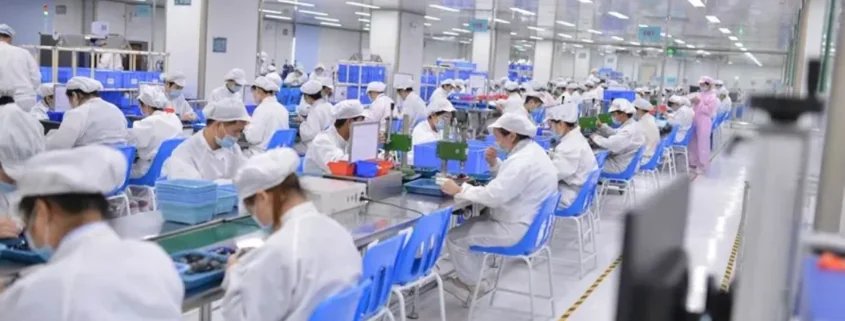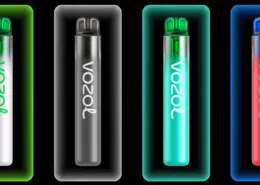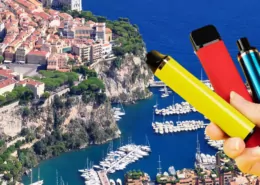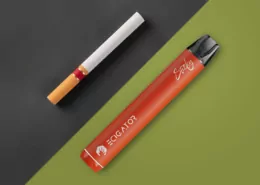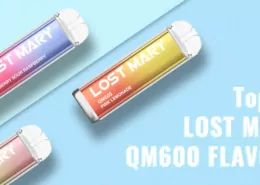Chinese E-Cigarettes “Cross the Sea”: In-Depth Analysis of Indonesia’s E-Cigarette Industry
Bintan Island, the largest island in the Strait of Malacca, faces Singapore across the sea and is only a 40-minute boat ride away. It is one of Indonesia’s main ports and an important port for Southeast Asian shipping, with a daily container throughput of nearly 2,700, expected to increase to one million per year in the future.
Bintan Island, the largest island in the Strait of Malacca, faces Singapore across the sea and is only a 40-minute boat ride away. It is one of Indonesia’s main ports and an important port for Southeast Asian shipping, with a daily container throughput of nearly 2,700, expected to increase to one million per year in the future.
In an industrial park 15 kilometers from the port, dozens of workers sit in a rolling assembly line, injecting e-liquid into pre-assembled cotton wicks and sealing them. When the mouthpiece is inserted into a suction port similar to a compressor, white mist is emitted, and an e-cigarette is assembled.
In the past two years, a trade route for e-cigarettes originating in China has rapidly emerged, incorporating Bintan Island’s ports and factories, making it even busier. Container ships loaded with lithium batteries, cotton wicks, and heating wires depart from Shenzhen and travel south through the Strait of Malacca to Bintan Island’s port, where they are transported by truck to the industrial park. Soon, these parts are assembled into finished products and shipped back to the port, passing through the Strait of Malacca and delivered to the 82 million e-cigarette users worldwide.
Who is controlling this secretive route? The answer, of course, is the Chinese. At least since 2021, a group of Chinese merchants have been appearing in Indonesia. Previously, they were active in Shenzhen, Dongguan, and the surrounding areas, controlling nearly 90% of the world’s e-cigarette production capacity.
Currently, savvy Chinese merchants are pouring into Southeast Asia, attempting to replicate their past success in new markets. This gold rush is still gaining momentum, and the evolution of the e-cigarette industry is part of this wave. Although this article focuses on e-cigarettes, it tells the story and details of Chinese companies going global in Southeast Asia.
Go to Indonesia! Go to Bintan Island!
Chinese businessmen have set their sights on Indonesia for good reasons.
Indonesia is the largest economy in Southeast Asia, with a projected GDP of nearly $1.32 trillion in 2022. Recently, the Indonesian President made a bold statement that by 2045, the country’s GDP will rank among the top five globally and become a developed country.
Indonesia has a population of over 270 million, making it the fourth most populous country in the world and home to the largest overseas Chinese population. It also has over 70 million smokers and is the only country in Southeast Asia that allows tobacco advertising on television and other media. Indonesians who are used to open-system e-cigarettes (with refillable e-liquid) have achieved self-sufficiency in e-liquid production.
Batam Island is one of Indonesia’s most important e-cigarette production bases and a gathering place for Chinese businessmen.
Currently, Chinese veteran e-cigarette factories such as Mysmok, Faton, and Ecigator have all built new factories in Batam Island.
Malang is another e-cigarette production base in Indonesia. Malang is a city in East Java Province, more than 2,000 kilometers away from Batam Island. Smoore, the world’s largest e-cigarette device manufacturer headquartered in Shenzhen Baoan, controls nearly 23% of the global e-cigarette device production capacity.
In July 2022, Smoore’s 14th global factory was officially completed in Malang, Indonesia. The factory covers an area of 6 hectares, has 16 production lines, and can produce 7,200 e-cigarette cartridges per hour per line. Industry insiders estimate that Smoore’s Malang factory has an annual output value of approximately $860 million.
Today, dozens of factories have appeared in Indonesia. “Not only Batam Island and Surabaya in Indonesia, but factories have also emerged in Jakarta and Tangerang,” said a Chinese factory owner who has settled in Batam Island.
Their appearance in Indonesia was not entirely intentional.
Most e-cigarette OEM factories in Shenzhen and Dongguan are contracted by international brands, especially top-tier factories. For many years, due to fierce competition, OEM factories have often been in a weaker position in negotiations with brand owners. One brand can decide their production decisions and even their life and death.
Considering the cost and the unstable Chinese supply chain in the past two years, powerful foreign brands have forced top-tier OEM factories to establish factories in third-party countries with lower tax and labor costs (according to EO Intelligence, these top-tier OEM enterprises’ factories in China still operate normally).
“Mostly, it’s the brand owners’ coercion,” said Zhou Yun, the general manager of Xiaofeixia. The company was established in 2016 and is based in Shenzhen, specializing in e-cigarette logistics. However, it has storage locations in Indonesia, the Philippines, Malaysia, and other global locations.
Before the arrival of e-cigarette companies, Indonesia attracted brands like Nike and Uniqlo with its cheap labor force. The “four shoe giants” Baocheng, Fentai, Yuqi, and Zhixiong set up factories in Indonesia, making it the second-largest producer of Nike sneakers. In 2021, Indonesia produced 26% of Nike sneakers, second only to Vietnam.
Apart from cheap labor, another advantage of Indonesia is its tariffs. The United States exempts or imposes lower tariffs on some goods from Indonesia, including electronic cigarettes.
In the 1970s and 1980s, the Indonesian government recognized the strategic location of Batam Island and began to develop it as a center for industry, commerce, and tourism. In 1978, Batam Island was designated as a free trade zone, enjoying preferential policies such as exemption from import and export tariffs and consumption taxes. As of 2020, Batam Island has a population of 1.19 million, with Chinese people accounting for over 6%.
In addition to electronic cigarette factories, companies that provide e-liquid for them have also flocked to Batam Island, such as Hongfu e-liquid and Huabao International.
Huabao International is a giant in the Chinese tobacco flavoring market, with a market share close to 50%, and maintains cooperation with 19 provincial cigarette companies in China. It is reported that Huabao International’s Indonesian factory plan started in 2020 and completed the construction of the plant and equipment installation last year. An industry insider who wished to remain anonymous told Ecigator that Huabao International invested millions of dollars and has built at least three factories in Batam Island, one producing e-liquid, one producing HNB electronic cigarettes (Heat Not Burning, a heated but not burned tobacco product), and one collaborating with other e-cigarette brands.
JiKang Group mainly engages in the business of outsourcing cigarette packaging and provides cigarette boxes for 18 cigarette companies, maintaining a net profit of 20%. The company also established a joint venture with Yunnan Tobacco to manufacture HNB e-cigarette devices on behalf of the latter. JiKang Group also established a subsidiary in Indonesia named YPSH, which undertakes tobacco production and e-cigarette manufacturing business.
In 1978, a contract manufacturer called “Taiping Handbag Factory” appeared in Dongguan County, marking the beginning of the era of processing trade known as “three types of imports and one type of compensation” in Shenzhen and Dongguan. Soon after, Nike, Adidas, and Apple also relocated their contract factories to Shenzhen, and the title of “world’s factory” was born.
Nowadays, Indonesia is replicating the experience of Shenzhen and trying to become the new “world’s factory”. With Chinese e-cigarette upstream and downstream companies such as e-cigarette brands, contract factories, flavoring and spice merchants, and even packaging manufacturers appearing in Indonesia, cotton wick and lithium batteries from China will continue to be shipped and assembled there.
“Going to Indonesia,” how is it doing?
It is premature to praise Batam Island as a replacement for Shenzhen.
Shenzhen has the most complete electronic cigarette industry chain in the world, with related components and raw materials at extremely competitive prices. For example, the most common horizontal spiral heating wire has a purchase price of only 0.2 yuan in Shenzhen, and the price of a single oil storage cotton sheet is no more than 0.4 yuan; lithium batteries with some technical barriers are mostly produced in Huizhou, which is less than 100 kilometers away from Shenzhen. Emerging companies such as EVE Energy have emerged in the area in recent years.
To reduce costs, many overseas electronic cigarette companies have long been accustomed to purchasing components in Shenzhen and then shipping them back to their home countries for assembly.
Duan Hong was once the product director of a local Indonesian electronic cigarette brand. The brand was accustomed to purchasing semi-finished products such as cigarette rods and batteries in Shenzhen, shipping them to the port of Jakarta in Indonesia, and then completing the final oil injection and assembly work locally.
However, most people in China would not think that this initial cost-cutting practice of overseas companies would be imitated by domestic small and medium-sized contract factories in just a few years.
Sun Zhefei is one of those who have made a fortune from China’s chaotic growth in the electronic cigarette industry. In 2020, when electronic cigarettes were at their hottest, Sun Zhefei, who was smart and decisive, achieved annual sales of several hundred million yuan in China with fruit-flavored electronic cigarettes. He rented a few hundred square meters of office space in the busiest area of Baoan District in Shenzhen.
But in the second half of last year, he found a good factory and workers on Batam Island, and almost all the raw materials needed for production were shipped from Shenzhen by sea. “Semi-finished products can be produced in China without a production license, so everyone does it in Shenzhen and then takes it away when it’s done,” he said.
One day in January this year, when the conveyor belt on the production line made a familiar turning sound again, Sun Zhefei (alias) posted a circle of friends:
“Mango, cola, and other (flavored electronic cigarettes) produced by Batam Island factory, 50,000 in stock, convenient logistics.”
What happened between Baoan District in Shenzhen and Batam Island? The answer is “production qualification.” Before April 2022, most people were not very sensitive to these four words. But soon, their fate was rewritten by these four words.
In April last year, the country introduced policies for electronic cigarettes based on cigarette management, and subsequently required that all links involving production (e-liquid, nicotine, and electronic cigarette hardware contract manufacturing) must apply for production qualifications (licenses). With production capacity restrictions (such as Yooz, with an approved annual production capacity of 15.05 million cigarette rods, about 329 million cigarette cartridges, and 6.1 million disposable electronic cigarette products), the ban on fruit-flavored electronic cigarettes, a 36% tax on the production (import) link and an 11% tax on the wholesale link, the wild era of electronic cigarettes has ended.
As of December last year, only more than 600 companies have successfully obtained production licenses. However, it is reported that there are still more than 700 companies in Shenzhen and Dongguan that have not obtained licenses.
One month after the new policy was implemented, Sun Zhefei was once depressed because he saw no hope of obtaining a license, and agents cut off their cooperation with him one after another. “There is no business at all.
Soon, they found a way to transport the semi-finished products to Indonesia for assembly and sales. These small and medium-sized factories became the second force to rush to Indonesia, after the top electronic cigarette manufacturers.
Regardless of the size of the company, entering Indonesia is not easy. For example, they all have to face the high cost of personnel management, including the low efficiency of grassroots workers caused by cultural differences and the high expenses of sending mid-to-senior-level employees.
The monthly salary of Indonesian workers is 2,300-2,400 yuan, while the average salary of first-line workers in Shenzhen is about 6,000 yuan. Although the salary of ordinary workers on Batam Island is less than half of that of Shenzhen workers, 90% of Indonesians believe in Islam and pray five times a day. Workers often work less than 40 hours a week. Therefore, the hourly wage gap between workers in the two places is not very large, and this does not include the efficiency differences caused by workers’ skill levels. Sun Zhefei found that the assembly cost of a single electronic cigarette in Indonesia is 0.3-0.4 US dollars (2-3 yuan), while the assembly cost in Shenzhen is only 2.08 yuan. This means that the cost in Indonesia is still 10% higher than that in Shenzhen.
Tang Binbin, a partner of Xiaofeixia, has frequently traveled between Shenzhen and Indonesia in the past two years. “We just finished dinner at 6 o’clock in the evening and were ready to work overtime, but the Indonesians had already left,” he said.
The monthly salary of middle-level managers and R&D personnel in Shenzhen’s electronic cigarette production management averages between 15,000 and 18,000 yuan. However, most mid-to-senior-level managers sent to Indonesia have salaries of more than 20,000 yuan. In the second half of last year, Sun Zhefei had to double their salaries in order to send a group of mid-to-senior-level managers to Indonesian factories.
An investment manager from an electronic cigarette industrial park in Indonesia told Ecigator that the most frequently asked question he hears is “How much money do you need to invest in a small factory of 500 square meters in Indonesia?” The high initial investment, combined with the fact that domestic manufacturing licenses are still being issued in waves, has led some small and medium-sized factories to adopt a wait-and-see attitude. For these enterprises, the new policies are already clearly regulated, and further tightening is only a matter of time.
Obtaining a Certificate of Origin in Indonesia
In November of last year, Xu Peng, a person from Jiangsu, rushed to a nearby electronic cigarette factory as soon as he finished his seven-day quarantine in a Shenzhen hotel. He meets with at least seven or eight clients every day, not counting those he contacts through WeChat or phone.
Xu’s boss is Xiong Delong, a wealthy Indonesian businessman of mixed Chinese-Indonesian descent. He has purchased more than 20 hectares of land in Kundian (the capital of West Kalimantan Province, Indonesia) and plans to build an electronic cigarette industrial park. Xu Peng’s purpose for this trip is to attract investment for the park.
Although Kundian is not as well-known as Batam Island, it is located on the world’s third-largest island, Kalimantan. It is home to a large number of Chinese people, with Chinese accounting for about 30% of the total population. Many of them are descendants of Chinese people who came to Southeast Asia during the Ming and Qing dynasties, and they speak Hakka dialect and eat Hakka cuisine.
Xu Peng told Ecigator, “The Teochew noodle here is more authentic than in Shenzhen.”
Historian Peng Mulan said that before the modern commercial organization, the corporate entity, was established, enterprises that spanned continents were able to coalesce and not disintegrate due to blood relations. Today, the large number of Chinese people who have gathered in Indonesia, with the blood ties they bring, more or less dissolves the fatigue and doubts that the long migration has brought to Chinese businessmen.
By the end of November last year, Xu Peng had a list of more than 20 factories he intended to investigate. In addition to blood ties between the same roots, Xu Peng believed that the Certificate of Origin issued by Indonesia was the greatest temptation for Chinese businessmen, especially for top contract manufacturers who value tariff compliance.
The United States is the world’s largest consumer of electronic cigarettes, consuming 58% of China’s annual exports of electronic cigarettes. Chinese electronic cigarettes exported to the United States are not competitive in terms of tariffs, even more so than in Indonesia, with a difference of more than 20%. In April 2018, the United States released a list of goods subject to tariff increases on China, which included the first batch of goods worth $34 billion, which began to be subject to a 25% tariff increase in July of that year, including electronic cigarettes. This has led to the tariff on disposable electronic cigarettes exported from China to the United States increasing from the original 6.5% to 31.5%.
However, since the resumption of Indonesia’s Most Favored Nation (MFN) treatment in 2020, its electronic cigarette kits exported to the United States are subject to only 2.6% of import tariffs.
According to U.S. law, to enjoy tariff preferences, companies must obtain a Certificate of Origin from the exporting country. The prerequisite for obtaining a Certificate of Origin is that 35% of the value of finished goods (including purchasing raw materials and hiring local workers for production) must remain in the local area. In other words, in order to obtain a Certificate of Origin, companies need to build factories in Indonesia or other places, employ local labor for production, or purchase local raw materials.
Obtaining a certificate of origin is not difficult for e-cigarette companies that have set up factories in Indonesia. For example, if the value of a single e-cigarette is 20 yuan, the cost of purchasing Indonesian e-liquid is 4-5 yuan (12ml), the labor cost of assembly is 2-3 yuan, and the cost of outer packaging is about 0.5 yuan. Only these three items often meet the standard that “the value-added part generated by local processing accounts for 35% of the total value”. “If it’s not enough, then we can lower the purchase price of semi-finished products from China or bribe the Indonesian customs,” Xu Peng told Ecigator.
In fact, after the imposition of tariffs, Chinese businessmen eager to avoid heavy taxes would first transport their products to third-party countries, change the containers in bonded zones to obtain a certificate of origin, and then ship them to the United States, thus avoiding the 25% tariff.
Compared with applying for a certificate of origin, the more popular and simpler approach in the past was to set up shell companies in Indonesia, Malaysia and other countries, and then ship the goods to North America after changing the packaging locally. However, now the United States is becoming increasingly strict in auditing the cost structure and details of goods.
According to lawyer Tan Chunhua, who is familiar with international trade, the US customs now often strictly examines records of material procurement, payment, customs clearance, etc., and if there are overseas factories involved, they will also require enterprises to provide a list of local workers and their payrolls. When necessary, customs may even go to the local area for investigation.
“If the enterprise is a listed company with public data, customs may also contact the company’s audit report when auditing,” said Tan Chunhua, who is also a partner at Beijing Jincheng Tongda (Shanghai) Law Firm. The company has provided customs clearance and certificate of origin consulting services for many Chinese furniture manufacturing enterprises planning to set up factories in Southeast Asia in recent years.
It is reported that in the past, manufacturing enterprises that migrated overseas were accustomed to leaving most of the raw material procurement and production processes in the domestic market, leaving only the last one or two processes for overseas operations. For example, furniture production enterprises would perform the final steps of painting and assembly overseas.
What is the next step for localization?
The transfer of the industry chain is a dynamic process. The first stage to move beyond the assembly process is e-liquid. When Simoer’s OEM factory first appeared in Indonesia last year, at least three companies followed to supply e-liquid.
However, e-liquid and its raw materials are not lacking in Indonesia today. Indonesia is the third largest tobacco market in the world, and e-liquid is very developed. According to data from the Indonesian Ministry of Industry, in 2020, Indonesia had more than 300 e-liquid factories and 18,677 types of e-liquid for sale. Tobacco leaves are the core raw material for making e-liquid, and the annual output of tobacco leaves produced in Lombok and North Sumatra in Indonesia is as high as 60,000 tons.
The owner of a Batam Island OEM factory who used to buy e-liquid from Shenzhen quickly switched to purchasing e-liquid locally in Indonesia when he discovered that the shipping cost had reached a staggering 4,700 yuan per cubic meter.
In addition, new domestic policies require that transactions involving nicotine, e-liquid, and e-cigarette products must be conducted on designated websites. This means that unqualified OEM factories will be unable to purchase e-liquid in China.
The e-cigarette OEM industry chain is long. A leading e-cigarette brand will authorize several factories to produce its e-liquid and devices, and behind these OEM factories are usually dozens of factories that provide heating wire, cotton, batteries, and e-liquid; and behind them are upstream factories such as hardware molds.
After e-liquid, what is the next step that can be localized in Indonesia?
Most of the interviewees gave the same speculation: lithium batteries. Nickel ore is the core material for making lithium batteries, and Indonesia firmly controls production capacity. As of 2020, Indonesia’s nickel ore reserves were approximately 21 million tons, accounting for 22% of the world’s reserves and the largest in the world. In recent years, Indonesia has been trying to keep the processing of natural resources within the country instead of simply earning the value of raw materials.
For example, four years ago, Indonesia introduced an export ban on nickel ore, requiring a complete ban on the export of nickel ore from January 2020, which greatly annoyed EU countries that were heavily dependent on imported nickel ore and led to a lawsuit being filed against the WTO.
In 2017, Apple’s contract factories first appeared in India, where labor costs are lower. However, due to the limited operational skills of workers and the imperfect local supply chain, only mature and niche products like the iPhone SE were produced.
Compared to Shenzhen, the electronic cigarette supply chain in Southeast Asia is still in need of improvement. For example, the development of new product parts requires constant adjustment of mold size and specifications, and therefore requires a large amount of hardware materials. A product manager who once surveyed electronic cigarettes in Vietnam found that even the hardware materials used to make electronic cigarette accessories molds have a purchase cost that is 3-6 times that of Shenzhen. For example, H13 (a type of hot work mold steel) has a purchasing price of 50 yuan/kg in Shenzhen but is unavailable in Vietnam.
In addition, developing new electronic cigarette products requires talent, especially core research and development personnel, which are relatively lacking in Indonesia. Even engineers with technical development experience in other fields need at least half a year to explore electronic cigarettes.
Just like Apple, although it has a global supply chain layout, research and development and product development are still located in the United States. The changes in the electronic cigarette industry may also experience similar developments. Last year, Duan Hong had an interview for a research and development position at Huabao International and learned that they were planning to expand from e-liquid to electronic cigarette contract manufacturing, with the research and development position located in Shenzhen.
In November last year, I met an electronic cigarette dealer in Huaqiangbei, Shenzhen. In the early years, he resigned from a well-paid job and rented a storefront of less than ten square meters in Huaqiangbei. Two years later, he bought at least three houses in Shenzhen. This area was once China’s largest electronic cigarette trading market, with hundreds of electronic cigarette wholesalers gathered. However, after the new electronic cigarette policy in 2022, the way of making money has changed.
Now, he simply sleeps until noon every day at home and leaves for the store around 2 or 3 pm. From a distance, you can see a middle-aged man wearing a shirt and carrying a black plastic bag entering the store. Young people from nearby stalls quickly gather around and ask if there are any watermelon-flavored pods. Later, he told me, “Do you think you can make money by selling tobacco-flavored (electronic cigarettes) honestly?”
He did not know that on Batam Island, Indonesia, at the entrance of an electronic cigarette park, a truck that had just finished unloading was preparing to return to the port. The wheels turned and rubbed against the ground, raising a cloud of dust. He also did not know that the increasing dust is affecting their fate.
- Bestselling Vapes in UK After Disposable Ban: What to Stock 2025 - August 8, 2025
- Argentina Debates Stricter Vape Laws Amid Prohibition Failures - August 8, 2025
- Nigeria Advocacy Group Urged to Hike Tobacco & Vape Tax by 100% - August 8, 2025

